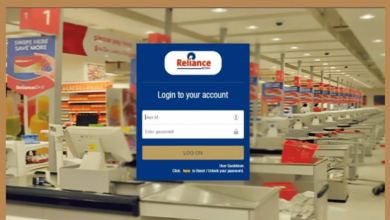Best Practices for Effective Customer Journey Management

Customer journey management is a strategic imperative for businesses aiming to deliver exceptional experiences that drive engagement, conversions, and loyalty. By orchestrating every interaction a customer has with a brand—across digital and physical touchpoints—marketers can align strategies with buyer behaviors and expectations. Effective journey management requires a blend of data-driven insights, cross-functional collaboration, and continuous optimization, whether in B2B or B2C contexts. This article outlines best practices for managing the customer journey, offering actionable guidance to create seamless, impactful experiences that deliver measurable results.
Ground Strategies in Deep Customer Insights
Understanding the customer is the cornerstone of effective journey management. Businesses must dive into the motivations, pain points, and preferences of their target audience to craft experiences that resonate. This begins with comprehensive research, combining quantitative data from analytics tools with qualitative insights from customer feedback.
Quantitative data, such as website click-through rates or CRM interaction logs, reveals how customers engage with touchpoints. For instance, a B2B software provider might notice that prospects frequently visit technical specification pages but rarely convert to demos, signaling a need for clearer information. In B2C, a retailer could identify high cart abandonment rates, indicating friction at checkout.
Qualitative methods, like interviews or surveys, uncover the “why” behind these behaviors. A B2B buyer might express frustration with lengthy sales processes, while a B2C shopper might value fast delivery options. Social listening tools can further capture sentiment on platforms like LinkedIn or Instagram, revealing how customers perceive the brand. By synthesizing these insights, businesses can tailor the journey to address specific needs, ensuring every touchpoint feels relevant and valuable.
See also: Business Travel 101: Everything You Need for Your First Work Trip
Create a Comprehensive Journey Map
A customer journey map is the blueprint for effective management, visualizing the path from awareness to retention. To create a robust map, identify all touchpoints—website visits, emails, sales calls, or support interactions—and map them across journey stages: awareness, consideration, purchase, and retention.
For example, a B2B buyer’s journey might start with a Google search, move to a webinar, involve a proposal review, and end with onboarding support. In B2C, a shopper might discover a brand via a social media ad, explore products on a website, complete a purchase, and receive a loyalty email. Documenting emotions and pain points at each stage—such as excitement during discovery or frustration with a complex checkout—adds depth to the map.
Use personas to make the map specific. A B2B persona like “Claire, the operations manager,” might prioritize efficiency, while a B2C persona like “Tom, the budget-conscious parent,” values affordability. Visual tools like Miro or Lucidchart can create clear, shareable maps that align teams around the customer experience, ensuring a unified approach to journey management.
Prioritize Personalization at Every Touchpoint
Personalization is a non-negotiable for modern customer journey management. Buyers expect tailored experiences that reflect their unique needs, whether they’re corporate decision-makers or individual consumers. Leveraging data to customize touchpoints enhances engagement and drives conversions.
In B2B, account-based marketing (ABM) can deliver targeted content to key accounts. For instance, a vendor might send a personalized case study to a procurement team, addressing their industry-specific challenges. In B2C, a retailer could use browsing data to recommend products via email, such as suggesting running shoes to a customer who viewed fitness gear.
Technology enables personalization at scale. AI-powered tools can predict preferences, while marketing automation platforms trigger timely communications, like a follow-up email after a demo request. However, personalization must respect privacy. Transparent data practices and compliance with regulations like GDPR build trust, ensuring customers feel valued rather than exploited.
Ensure Seamless Omnichannel Integration
Customers engage with brands across multiple channels—social media, websites, emails, or in-person interactions—and expect consistency at every turn. Effective journey management requires integrating these channels to create a seamless experience. A B2B buyer who sees a LinkedIn ad should encounter the same messaging on the vendor’s website, while a B2C shopper expects a mobile app offer to match an in-store promotion.
Integrated platforms, like CRM systems or marketing automation tools, are critical for this alignment. A CRM can track a customer’s journey across channels, ensuring a sales rep knows a prospect’s prior interactions, such as a downloaded whitepaper. This continuity prevents disjointed experiences that erode trust.
Marketers should audit channels regularly to ensure consistency. For example, a B2C brand might verify that pricing is uniform across its website, app, and social media ads. In B2B, aligning webinar content with sales pitches ensures a cohesive narrative. By prioritizing omnichannel integration, businesses deliver a fluid journey that keeps customers engaged.
Address Pain Points Proactively
Identifying and resolving pain points is essential for optimizing the customer journey. Pain points—such as a confusing website or slow support responses—can derail conversions and damage loyalty. A comprehensive journey map highlights these issues, enabling proactive solutions.
For instance, a B2B vendor might discover that lengthy contract negotiations frustrate buyers, prompting the introduction of an e-signature platform to streamline approvals. In B2C, a retailer noticing cart abandonment could simplify its checkout process or add a chatbot for real-time assistance. Customer feedback, gathered through surveys or support interactions, validates these pain points and guides improvements.
Testing solutions is critical. A/B testing can compare different approaches, such as two versions of a landing page to see which reduces bounce rates. Regular analysis of KPIs, like conversion rates or time to purchase, ensures solutions are effective. By addressing pain points proactively, marketers enhance the journey and drive better outcomes.
Foster Cross-Functional Collaboration
Customer journey management is not a marketing-only endeavor—it requires collaboration across departments. Sales, customer support, product teams, and IT all play roles in shaping the customer experience. Effective management hinges on aligning these teams around shared goals.
Regular workshops or shared dashboards can facilitate collaboration. For example, marketing might share journey map insights with sales to tailor pitches, while customer support provides feedback on post-purchase pain points. A B2B software company could align marketing’s content strategy with sales’ demo process, ensuring prospects receive consistent messaging. In B2C, a retailer might coordinate with IT to optimize website performance, reducing load times that frustrate shoppers.
Cross-functional alignment ensures touchpoints are cohesive and customer-centric. By fostering collaboration, marketers create a unified approach that maximizes the journey’s impact.
Leverage Technology for Efficiency and Scale
Technology is a catalyst for effective customer journey management, enabling personalization, automation, and real-time insights. CRM systems like Salesforce provide a centralized view of customer interactions, ensuring continuity across touchpoints. For example, a B2B marketer can use CRM data to tailor a follow-up email based on a prospect’s webinar attendance.
AI enhances journey management by predicting behaviors and automating tasks. A B2C retailer might use AI to recommend products based on purchase history, while a B2B vendor could prioritize high-value leads based on predictive analytics. Chatbots offer instant support, answering questions during the consideration phase to maintain momentum.
Integration is key to avoiding siloed data. A cohesive tech stack ensures seamless transitions, such as a prospect moving from a website form to a sales call. By leveraging technology, marketers can scale personalized experiences and optimize touchpoints efficiently.
Measure and Iterate for Continuous Improvement
Customer journey management is an ongoing process that requires regular measurement and refinement. KPIs like conversion rates, customer satisfaction scores, and retention rates reveal how well the journey performs. For instance, a B2B vendor might track demo-to-contract conversion rates, while a B2C brand monitors repeat purchase rates.
A/B testing can refine specific touchpoints. Testing two email campaigns, for example, can identify which drives more engagement. Customer feedback, gathered through surveys or account reviews, provides qualitative insights to complement data-driven analysis.
Regular journey map updates—quarterly or biannually—ensure alignment with evolving customer expectations. A B2B vendor might incorporate new sustainability-focused touchpoints, while a B2C brand could adapt to growing mobile app usage. This iterative approach keeps the journey relevant and effective.
Build Long-Term Relationships Through Engagement
Effective customer journey management extends beyond conversions to foster lasting relationships. Post-purchase touchpoints, like onboarding, support, and loyalty programs, are critical for retention and advocacy. A B2B software provider might offer personalized training to ensure clients maximize value, while a B2C retailer could send post-purchase emails with product tips or discounts.
Feedback loops strengthen these relationships. Regular surveys or check-ins allow businesses to address evolving needs. For example, a B2B vendor might learn that clients want faster support, prompting a new helpdesk system. In B2C, a brand could use feedback to refine its loyalty program, offering rewards that resonate with customers.
By prioritizing post-purchase engagement, marketers turn one-time buyers into loyal advocates, driving referrals and repeat business. This focus on long-term relationships maximizes customer lifetime value and amplifies brand impact.
Staying Agile in a Dynamic Landscape
Customer journey management is a dynamic discipline that demands agility and customer-centricity. By grounding strategies in data, personalizing touchpoints, integrating channels, and fostering collaboration, marketers can create journeys that resonate deeply. Technology amplifies these efforts, while continuous measurement ensures ongoing relevance. As customer expectations evolve—whether through new technologies or shifting priorities—marketers must adapt, using journey management as a strategic lens to drive engagement, conversions, and enduring loyalty in an ever-changing market.





